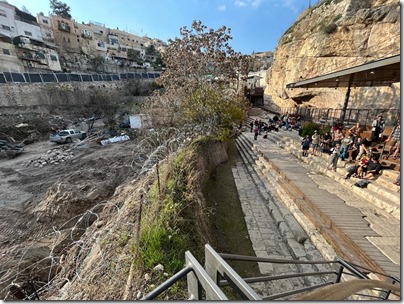Bryan Windle highlights the top three reports in biblical archaeology in January 2023.
Expedition Bible’s latest video considers whether the archaeological evidence supports the authenticity of the traditional tomb of Lazarus in Bethany.
Carl Rasmussen shares some musings from his recent tour of Israel.
In preparing a map for the Bible Mapper Blog, David Barrett identified the hill of Ammah in the pool of Gibeon story (2 Sam 2) with el-Qubeiba, which has also been identified as the Emmaus of Luke 24.
Antiquities police caught a couple of thieves at the bottom of a pit, after they had already caused irreversible damage to a 1st-century winepress in western Galilee.
Antiquities thieves who had discovered an ancient sarcophagus at the site of Samaria were caught by authorities.
Aren Maeir has collected a number of videos where he discusses the Philistines and his excavations of the city of Gath.
The Israel Antiquities Authority has begun moving into its new home at the Jay and Jeanie Schottenstein National Campus for the Archaeology of the Land of Israel in Jerusalem.
The Great Isaiah Scroll arrived at what is now known as the Albright Institute on February 19, 1948. To celebrate the 75th anniversary, Marcello Fidanzio will be lecturing on Qumran Cave 1 and the Great Isaiah Scroll on February 21 at the Israel Museum.
“The Tel Shimron Experience is a 5-day, 6-night archaeological excursion in Israel where you will have the opportunity to participate in a real archaeological dig.” The price is similar to a 3-week half-season, so you are effectively paying for the privilege of a shorter commitment.
A heygo tour of “The Colosseum Inside” is planned for tomorrow morning.
HT: Agade, Arne Halbakken, Explorator

